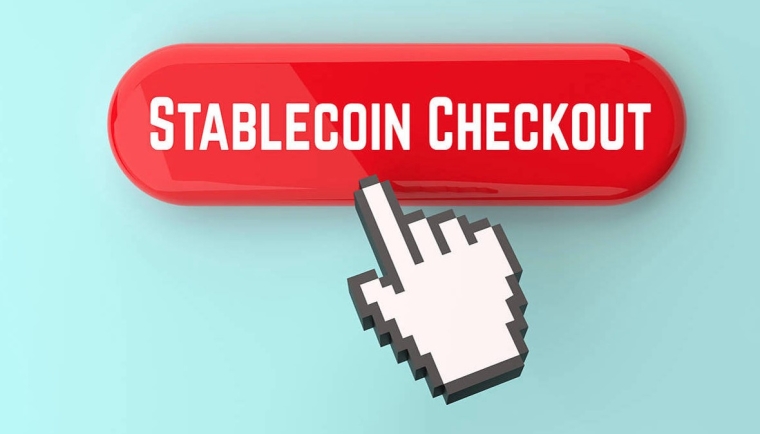
The eurodollar market – comprising dollar-denominated deposits held outside the United States – emerged in the late 1950s to meet global demand for dollar liquidity, while avoiding the regulatory costs associated with dollar-denominated financial intermediation. Initially viewed with suspicion, not least from US authorities, the market was soon integrated into the global monetary system, with the US even providing partial supervision. It is now indispensable to global finance.
This pattern has recurred throughout financial history. Prior to the 2008 financial crisis, “shadow banks” – investment banks, structured investment vehicles, and money-market funds – created money-like liabilities, which were not secured by the US Federal Reserve. When confidence collapsed, liquidity evaporated, leading to credit freezes, fire sales, and bankruptcies. To ensure their survival, major financial institutions such as Goldman Sachs and Morgan Stanley transformed themselves into bank holding companies, thereby gaining access to central-bank liquidity and deposit insurance.
While financial innovations often emerge on the system’s periphery, beyond the reach of regulation, if they prove to be systemically important, they end up being integrated into the system’s regulated core. Moreover, when private entities issue money-like claims at scale, they eventually seek out – or are compelled to obtain – central-bank backing.
Stablecoins, privately issued digital tokens backed by external assets, are likely to follow the same trajectory. What remains unclear is precisely how they will be integrated into the monetary system, by which actors, and under what institutional framework.
The answer will depend significantly on regulation – specifically, whether the US or European approach prevails. To be sure, authorities in both the US and the European Union have so far pursued a custodial model, treating stablecoin issuers as payment intermediaries, rather than deposit-taking lenders. But that is where the similarities end.
US regulators argue that issuers of systemically important stablecoins should operate as insured depository institutions or under equivalent prudential supervision. These entities do not necessarily need to become banks, but they should face comparable standards, including robust liquidity rules and capital requirements. Circle, which issues the USDC and EURC stablecoins, has publicly supported this approach, advocating stronger oversight and, possibly, narrow banking structures that eventually could grant issuers limited eligibility to hold reserves in Fed accounts.
By contrast, the EU’s Markets in Crypto-Assets (MiCA) regulation establishes a two-track system. Non-bank issuers can operate as Electronic Money Institutions (EMIs), which must hold enough reserves to provide full (1:1) backing of issued stablecoins, guarantee par-value redemption by token holders, and segregate client assets. EMIs may not lend or perform maturity transformation – that is, they cannot create credit.
Credit institutions (banks) may issue stablecoins directly under their existing banking licenses, subject to the same prudential standards as their other liabilities. For example, Société Générale’s subsidiary Forge issues EUR CoinVertible under a full banking license. Banco Santander and BBVA are also exploring tokenised deposit pilots, in which customer deposits are represented on permissioned blockchains but remain on the bank’s balance sheet. Simply put, European banks can issue tokenised deposits or euro-denominated stablecoins that are fully integrated within their balance sheets and supervised by the same authorities as their traditional activities.
The EU model has the virtue of institutional clarity. By mirroring the two-tiered monetary system – in which central banks supply reserves to banks, which provide money to the public – it preserves the functional hierarchy between public and private money. But this model might inhibit innovation, because incumbents often face technological inertia. Integrating blockchain-based systems into legacy banking infrastructure will be no easy feat.
The US model has its own disadvantages, rooted in the separation of institutions’ lending and deposit functions. If non-bank stablecoin issuers (which do not extend credit) hold reserves in Treasuries or at custodial banks, commercial banks (which do extend credit) could see their access to deposits constrained.
As markets mature, moreover, the line between stablecoins and deposits will blur. If stablecoin issuers and banks are competing for the same pool of retail or institutional funds, regulators will face pressure to subject them to the same rules. But some large stablecoin issuers will push in the opposite direction, seeking greater flexibility to invest reserves, extend credit, or access central-bank accounts directly. Over time, these competing pressures could yield a new hybrid category: digital full-reserve or narrow banks.
Financial history holds another important lesson: when liabilities function as money, there is always a risk of a run. Regulating stablecoin issuers as custodians does not change this, even as it reduces operational risks. For traditional banks, the risk of runs is mitigated by deposit insurance and the central bank’s lender-of-last-resort function. If stablecoins become systemically important, central banks may have no choice but to extend comparable protections, either directly or via regulated intermediaries.
Both the EU’s MiCA Regulation and the United States’ GENIUS Act follow this logic: while differing in institutional design, each seeks to bring systemically significant stablecoin issuers under prudential and operational oversight equivalent to that applied to banks. Although neither requires large stablecoin issuers’ formal conversion into banks, the regulatory trajectory favours functional equivalence in prudential oversight.
This suggests that both jurisdictions may end up bringing stablecoins into the financial system’s core through charters, supervision, and central-bank connectivity. In a sense, Circle’s model – a non-bank subject to prudential oversight – amounts to a step in this direction.
The rise of digital currencies is often portrayed as synonymous with the fall of traditional money – and the banking system that moved it. But what we are more likely to see in the coming decade is banking’s digital reincarnation, with a retail payment stablecoin circulating on public blockchains (such as Ethereum), fully backed by reserves held at a central bank-linked institution. The architecture will be new, but it will have a proven foundation: the credibility of the central bank. The ultimate backstop for private money is and will remain public trust, embodied in the central bank’s balance sheet.
Lucrezia Reichlin, a former director of research at the European Central Bank, is a Professor of Economics at the London Business School. Copyright: Project Syndicate, 2025, published here with permission.

We welcome your comments below. If you are not already registered, please register to comment.
Remember we welcome robust, respectful and insightful debate. We don't welcome abusive or defamatory comments and will de-register those repeatedly making such comments. Our current comment policy is here.